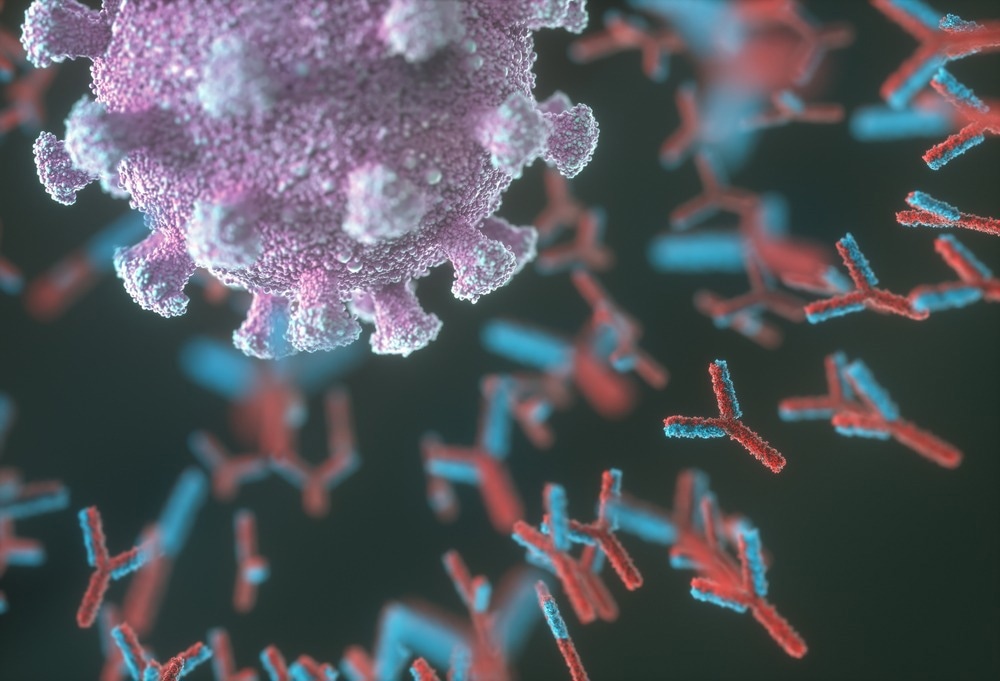Researchers computationally design immunogens to elicit antibodies against different SARS-CoV-2 variants
A recent study published in PLOS Computational Biology designed immunogens to induce antibodies against severe acute respiratory syndrome coronavirus 2 (SARS-CoV-2) variants.

Background
SARS-CoV-2 vaccines are highly effective, yet, several variants have emerged that impact the efficacy of available vaccines. Although current vaccines are efficacious in preventing severe disease upon infection with mutant variants, their emergence hints that more immune-evasive variants might appear in the future. Moreover, other pathogenic CoVs might evolve due to zoonosis; therefore, vaccines against potential SARS-CoV-2 variants and other zoonotic CoVs are required to combat future outbreaks.
About the study
In the present study, researchers computationally designed immunogens to elicit antibodies against different SARS-CoV-2 variants. Structural and sequence data were leveraged to identify variable and conserved residues in CoV spike proteins. Each spike residue was assigned a conservation fraction, which was the mean of the biochemical and structural conservation fractions.
The structural conservation fraction was computed using the structure-based sequence alignment with a particular CoV as the reference. It was the fraction of other CoVs that structurally aligned at a given residue. The biochemical conservation fraction was computed from the multiple sequence alignment with a specific CoV as the reference. This was the fraction of sequences with an amino acid residue in the same class (hydrophobic, polar, etc.) as the reference CoV's consensus residue.
It was hypothesized that a cocktail of variant spike sequences could induce a polyclonal response to protect against SARS-CoV-2 variants. The idea was to elicit strain-specific antibodies that can protect against multiple variants instead of broadly neutralizing antibodies (bnAbs), which target conserved epitopes. To this end, a list of 37 mutations was generated involving 10 residues; most were spatially close to the spike protein's receptor-binding domain (RBD).
The researchers trained neural networks using RBDs which had spatially separated mutations. A neural network was trained using a dataset of approximately 169,000 RBD mutants with measured expressions. Additionally, a separate neural network was trained using a dataset of around 135,000 RBD mutants to predict ACE2 binding affinity. The neural networks predicted the expression of desired antigens and their ACE2 binding properties.
A coarse-grained stochastic model was used to simulate the processes that occur during affinity maturation (AM). The computational AM model evaluated how antibodies generate in response to (immunization with) the wild-type (WT) spike and the designed antigens. The primary goal was to identify a vaccination scheme using the designed antigens that are best protective against variants than vaccination with WT spike alone.
Findings
Using the conservation analysis, six antigens (sequences 1 to 6) were designed. The neural networks showed high correlations on test sets; therefore, the designed antigens' predicted binding affinities and RBD expressions were compared with circulating variants. No designed antigen significantly reduced binding affinity or expression more than the corresponding circulating variant.
Although the antigens were designed before the Omicron variant appeared, mutations in the residues 417, 478, 484, 493, and 501 are common to the designed antigens and the Omicron variant. AM was simulated following one or two WT spike immunization(s). Anti-WT spike titers were high following one or two WT spike immunizations. Still, titers against variant spike proteins were reduced depending upon the mutational distance between variant and WT spikes.
Next, simulations were run to find an optimal vaccination scheme using the designed antigens. The authors simulated a 1) single immunization with all six designed antigens, 2) two immunizations with six antigens, 3) a single immunization with three antigens (sequences 1 to 3), and 4) immunization with three antigens (sequences 1 – 3), followed by immunization with sequences 4 – 6.
Antigen cocktail immunizations had lower anti-WT titers than WT immunization, as the cocktail antigens are mutated from the WT spike. Yet, two immunizations with cocktail antigens still retained moderately high anti-WT titers. Anti-Beta, -Gamma, and -Delta titers were higher with cocktail antigens than with WT. The authors noted that immunization with cocktail antigens after exposure to WT spike had increased titers than boosting with WT.
Anti-Alpha, -Delta, and -WT titers were higher for two WT immunizations than hybrid immunization involving one exposure to WT and the other to cocktail antigens. This was due to fewer mutations in these variants. However, anti-Beta and -Gamma titers were equivalent between two WT immunizations and the hybrid immunization scheme (WT | cocktail).
Lastly, the researchers computed spike conservation across 12 CoVs from multiple genera to identify a pan-CoV vaccine target. None of the selected CoVs had conserved sequences in the RBD, as different CoVs have distinct host cell receptors. However, the S2 domain of the spike has various residues that are structurally conserved across many CoVs.
The residues are conserved across multiple CoVs as they overlap with the fusion peptide and S2' cleavage site. These sites must be conserved since they are functionally important. Thus, developing antibodies to the stem of the CoV spike may be feasible and could serve as a pan-CoV vaccine strategy.
Conclusions
The researchers designed six antigens based on sequence and structural data analyses and found, via neural networks, that the antigens are viable and can bind ACE2. They showed that antigen cocktails provided stronger immunity against existing SARS-CoV-2 variants than WT vaccination and predicted that the cocktail of six antigens was optimal out of several possibilities.
- Wang, E. and Chakraborty, A. (2022) "Design of immunogens for eliciting antibody responses that may protect against SARS-CoV-2 variants", PLOS Computational Biology, 18(9), p. e1010563. doi: 10.1371/journal.pcbi.1010563. https://journals.plos.org/ploscompbiol/article?id=10.1371/journal.pcbi.1010563
Posted in: Medical Science News | Medical Research News | Disease/Infection News
Tags: ACE2, Amino Acid, Antibodies, Antibody, Antigen, binding affinity, Cell, Coronavirus, Coronavirus Disease COVID-19, Efficacy, immunity, Immunization, Omicron, Protein, Receptor, Respiratory, SARS, SARS-CoV-2, Severe Acute Respiratory, Severe Acute Respiratory Syndrome, Spike Protein, Syndrome, Vaccine, Zoonosis

Written by
Tarun Sai Lomte
Tarun is a writer based in Hyderabad, India. He has a Master’s degree in Biotechnology from the University of Hyderabad and is enthusiastic about scientific research. He enjoys reading research papers and literature reviews and is passionate about writing.
Source: Read Full Article


